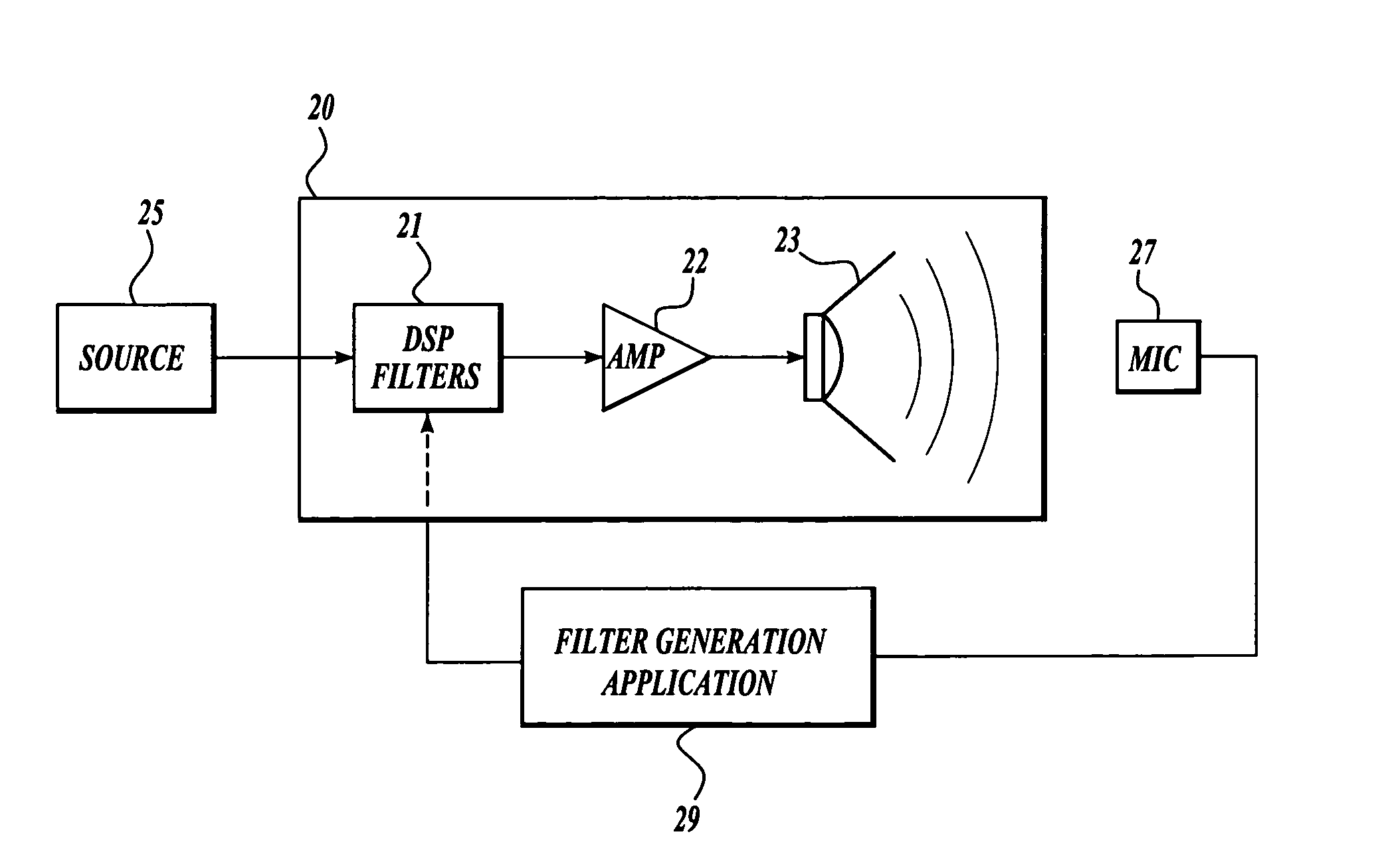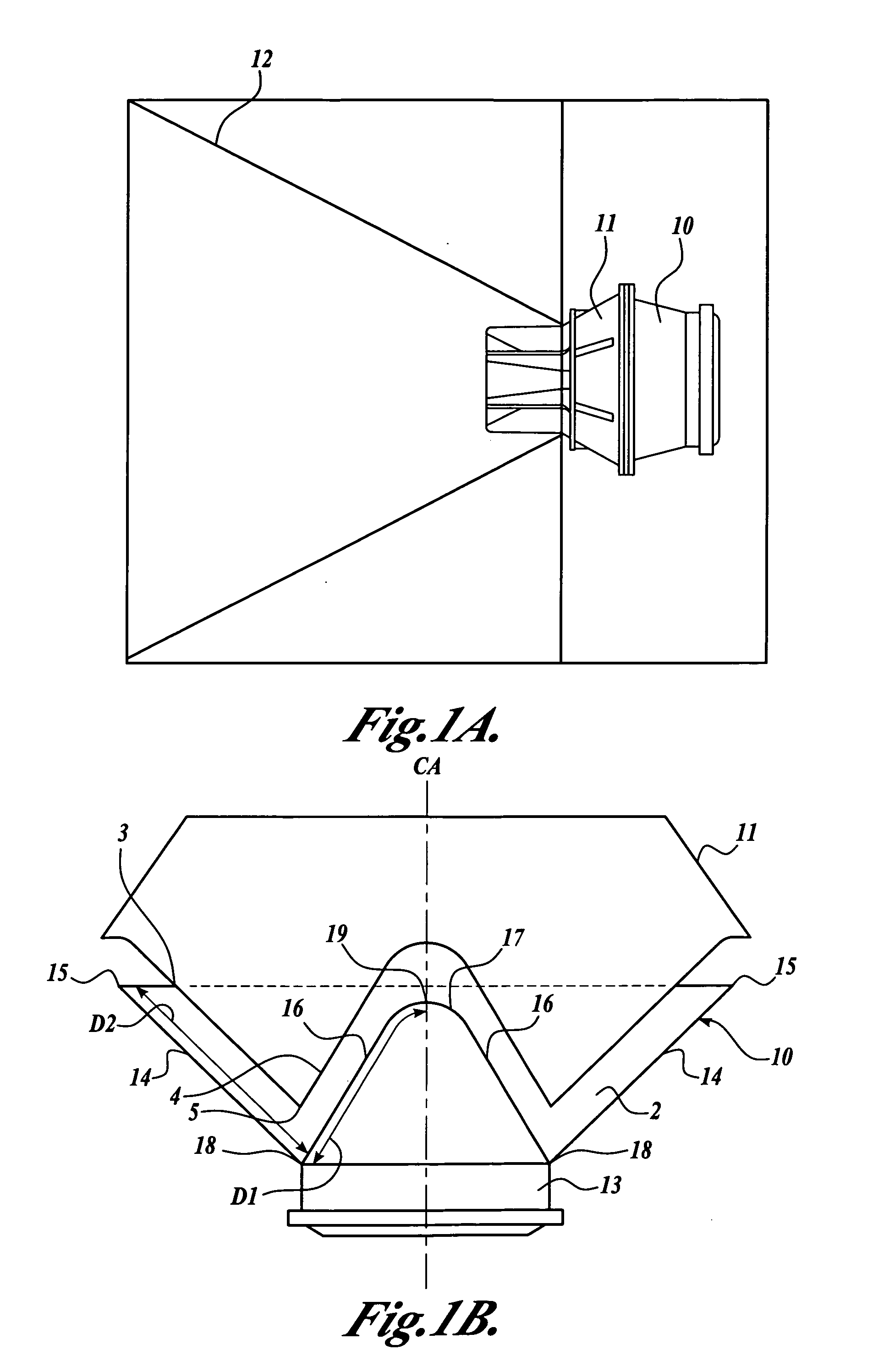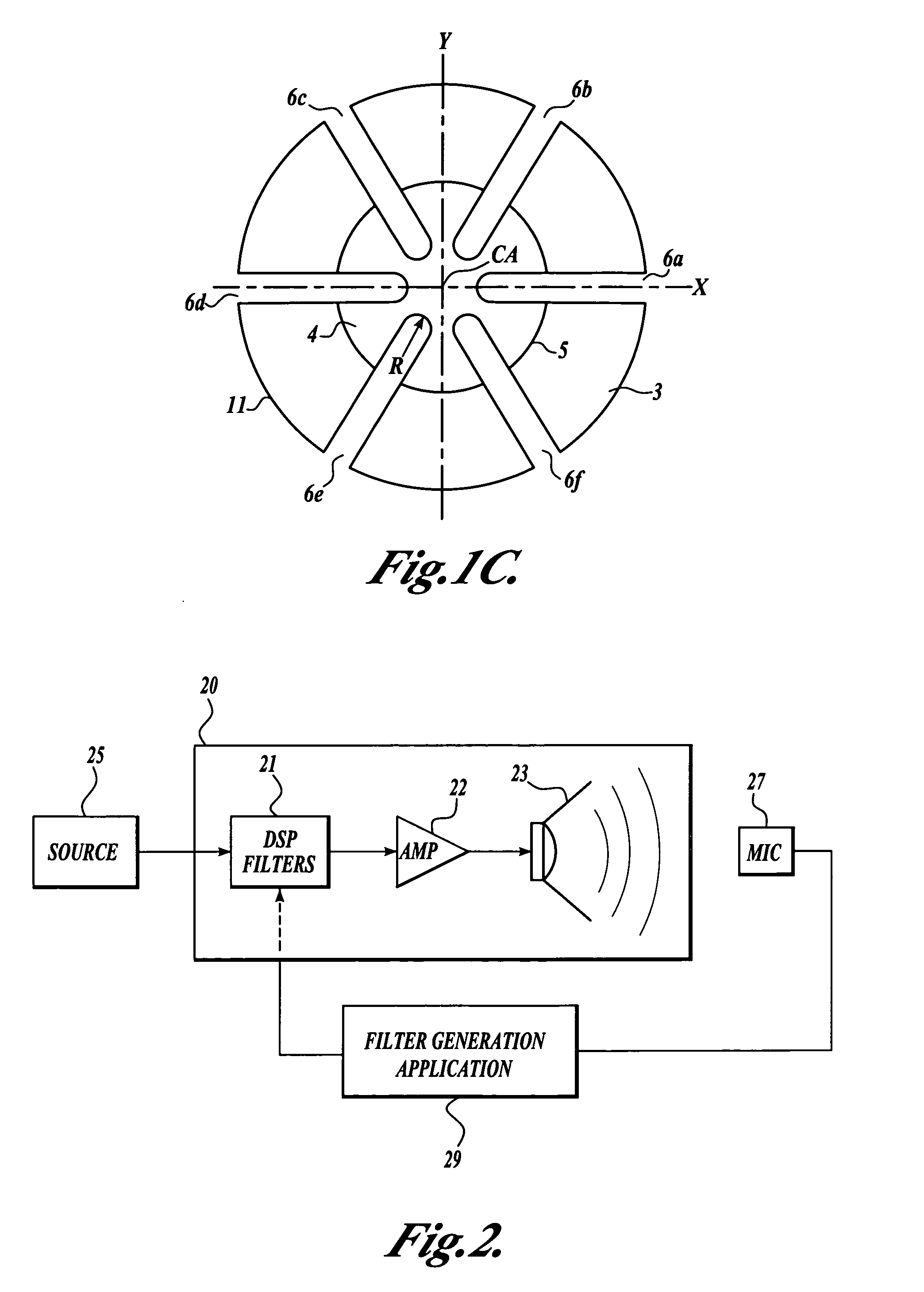Creating digital signal processing (DSP) filters to improve loudspeaker transient response
- Summary
- Abstract
- Description
- Claims
- Application Information
AI Technical Summary
Benefits of technology
Problems solved by technology
Method used
Image
Examples
example 1
Compression Driver Phase Plugs
[0071] A first example mechanism, which is particularly well suited to digital preconditioning in accordance with the present invention, is the time smear produced by compression driver phase plugs.
[0072] Typically the openings in a phase plug are arranged in such a way that, from any point on a loudspeaker diaphragm, the path to an opening is relatively short. The designer of a compression driver intends for all of the sound power produced within the driver to leave via the “nearest exit”. However, a significant fraction of the sound energy arriving at a phase plug opening will either continue past it or reflect back from it; in either case arriving later at other phase plug openings (or slots) where the sound is divided again, ad infinitum. Rather than a single acoustical impulse, the response exhibits a decaying sequence of impulses.
[0073] Referring additionally to FIGS. 4A and 4B showing a slotted phase plug as described in reference to FIGS. 1A-...
example 2
Horn Resonance
[0079] A second loudspeaker mechanism, which yields well to digital preconditioning in accordance with the present invention, is horn resonance. A wavefront progressing down any horn will encounter one or more discontinuities in the area expansion. All horns present a discontinuity at their mouths. Constant directivity horns often employ a diffraction slot to achieve a wide coverage pattern at high frequencies. The exit of this slot represents a severe discontinuity.
[0080] A discontinuity in a horn's expansion produces a reflection. A fraction of the sound power reverses course and returns to the compression driver where it is partially absorbed and partially re-emitted, often several milliseconds late. This process is regenerative, once again producing a decaying series of arrivals. Low frequencies tend to reflect more strongly than high frequencies, so the reflections are most prevalent in the lowest octaves of the horn's usable range. It is this behavior that prod...
example 3
Cone Resonance
[0082] A third loudspeaker mechanism, which also yields well to digital preconditioning in accordance with the present invention, is cone resonance. A cone loudspeaker is far from being a rigid piston. In fact, the most successful cone formulations transmit mechanical vibrations at a speed not too dissimilar to the speed of sound in air. A mechanical wave travels from the voice coil to the surround, where it is only partially absorbed. A portion of the energy is reflected back down the cone to the voice coil, where it is, once again, partially absorbed and partially re-emitted. Unlike a horn, the reflections tend to be strongest at the upper end of the transducer's frequency range. In many cases, the presence of the mechanical resonance defines the upper frequency limit of usability.
[0083] The sound reproduced by the initial mechanical wavefront combines with sound produced by later, re-emitted mechanical wavefronts. Each of these contributions is produced by the sam...
PUM
 Login to View More
Login to View More Abstract
Description
Claims
Application Information
 Login to View More
Login to View More - R&D
- Intellectual Property
- Life Sciences
- Materials
- Tech Scout
- Unparalleled Data Quality
- Higher Quality Content
- 60% Fewer Hallucinations
Browse by: Latest US Patents, China's latest patents, Technical Efficacy Thesaurus, Application Domain, Technology Topic, Popular Technical Reports.
© 2025 PatSnap. All rights reserved.Legal|Privacy policy|Modern Slavery Act Transparency Statement|Sitemap|About US| Contact US: help@patsnap.com



